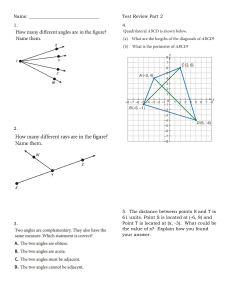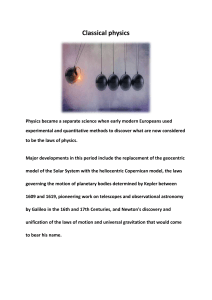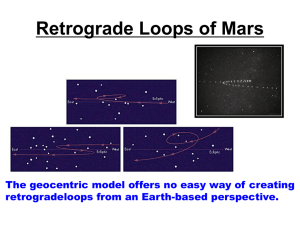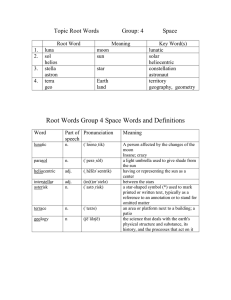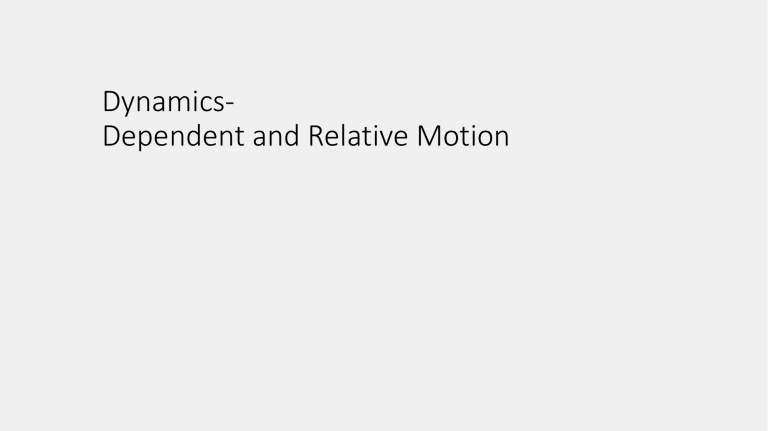
DynamicsDependent and Relative Motion Dependent Motion • When two or more masses are connected so that the motion of one of them results in the predictable motion of the others. • Multiple dimensions but a single degree of freedom 1DOF vs 1D • Use Geometry to find the relationship between the masses. Normally a total length or distance. • Take derivative of distance to find dependent velocities and dependent acceleration. • Notice we don’t need vectors, it is just like the 1D kinematic analysis • Useful for pulley and linkage systems. Dependent Motion Example Relative Motion of two Particles • We assume that the two particles are translating only relative to each other! • This means the two coordinate systems do not rotate relative to each other. Cartesian Coordinates! • 𝑟𝐵 = 𝑟𝐴 + 𝑟𝐵/𝐴 • 𝑣𝐵 = 𝑣𝐴 + 𝑣𝐵/𝐴 • 𝑎𝐵 = 𝑎𝐴 + 𝑎𝐵/𝐴 • 𝑟𝐵/𝐴 is the relative position of B to A • 𝑣𝐵/𝐴 is the relative velocity of B to A • 𝑎𝐵/𝐴 is the relative acceleration of B to A A 𝑟𝐵/𝐴 B 𝑟𝐴 𝑟𝐵 Notes on Relative Motion • We can only use the conservation of momentum F=ma on an ‘inertial’ coordinate system. (This means the coordinate system is not accelerating) • It is often easier or even only possible to measure from a moving coordinate system. • Assuming A is the inertial coordinates (usually relative to the earth), we first know our own motion rA, vA, aA • We then measure the motion of our target rB/A, vB/A, aB/A from our perspective. • We can then find the absolute motion of B from the difference. • In 2D, we usually end up with a system of two equations and two unknowns. Relative Motion and the Great Heliocentric Debate • Relative Motion from a moving platform appears very complex. • • • • What is the motion of the moon relative to the earth? What is the motion of mars relative to the sun? What is the motion of mars relative to earth? The great Greek/Roman Deities • Aristarchus (3rd Century BC) proposed a Heliocentric model of the solar system. • Multiple Indian and Islamic Heliocentric models (3rd Century AD) • Nicolaus Copernicus 1543 was the first person to create a mathematical Heliocentric model. • Tycho Brahe 1587-Weird Steam Punk type that measured astronomical motion very accurately • Johannes Kepler 1609-(Opportunistic Thief/Conman/My Hero) of Brahe’s work and the first measurement of planetary motion as ellipse. First planetary motion tables. The horoscope scam. • Galileo Galilei 1616-First saw moons of Jupiter and Saturn’s rings. Didn’t believe it until he showed his work to Kepler and the two matched. Homework • Problems 12-195, 201, 211, 214, 218, 221, 234
